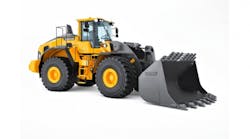If you decided to sell your rental business today, would you know where your company stands financially? Are your financial records in order and up-to-date? Would the purchaser find anything that might surprise you? Our primary business at Hageman, Stansberry & Associates is selling rental companies, and we can assure you that when selling your company, an acquirer will dig into all aspects of your business to get a complete picture and understanding of the company's operations.
It's always better to know your business inside and out and prepare for the acquisition process in advance. In other words, you shouldn't be surprised by findings about your business from a third-party buyer who has just entered the picture in the last few weeks or months. There are things a rental company owner should know about his or her rental business at all times, whether the company is for sale or not.
Know your financial statements
When do you have your final monthly financial statements? We recommend that you have them no later than the 10th of every month. Too often we see companies only preparing financial statements quarterly, or even worse, annually. When these companies finally get the statements, the company owners inevitably say something like, “I thought we did better than that.”
We've run across several large, otherwise very professionally run, companies that did not produce their monthly financial statements until near the end of the following month. That's too late! By the time those results are in and any problems are identified, another month has passed. Analyze financial statements monthly; look for trends as acquirers do and will. Compare the most recent month vs. the prior month; the most recent month vs. the same month last year; and year-to-date this year vs. year-to-date last year. Review the various revenue and expenses categories and look for anything that is unusually high or unusually low.
Document the reasons for any fluctuations or unusual increases or decreases in expenses and revenues. It's much easier to document these items while it's still fresh in your mind rather than trying to recreate it months after the fact. Did the company have a big job that required substantial re-rents? Did you make major improvements to your facility that you expensed? If so, note them.
There are several legitimate reasons for fluctuations. When we sell a business, we need good solid financial data from our clients, not the proverbial shoebox full of data. One of our sayings is, “We can't help you if you don't have good financial data.” Most, if not all, acquirers won't consider buying a business without good, reliable financial records.
Know your CPA
You need a professional certified public accountant who is willing to get to know your business and the rental industry in general. We know of CPAs who regularly visit their clients' rental stores and often take the time to subscribe to RER and other industry publications. A CPA can spot negative trends in your business such as excess payroll, inventory, debt and past-due receivables. He or she should be a trusted member of your inner circle.
Today's tax laws are ever changing with things like bonus depreciation and lower tax rates on dividends, and you may be unaware of new rules that could affect your business. We recommend that you have a tax-planning meeting with your accountant at least quarterly. This CPA is not the person or firm to sell your business, but someone who knows your business and will be an invaluable asset during the due diligence process.
Knowing where you stand also involves some industry ratios or, as we call it, industry metrics. The rental business is not rocket science. We've found that if a rental company owner keeps track of, and manages, certain measurements, he or she will have a successful business. Following are the main industry metrics we like to track and manage:
- Know your revenue comparisons
Believe it or not, many rental companies never get past this one. Know where you stand with revenue trends. Ask yourself: “Where do I stand this month vs. last month?” The same goes for year-to-date this year vs. year-to-date last year; this month vs. the same month last year; the last three months this year vs. the last three months last year; and actual vs. budget (certainly you have a budget). Be sure to break out the revenue by category (i.e. rental, sales, delivery and damage waiver). Don't fool yourself with favorable revenue comparisons that are the result of a couple of large equipment sales.
- Know your payroll as a percentage of total revenue
We use fully burdened payroll, which includes base pay, overtime, vacation pay, sick pay, commissions, bonuses, payroll taxes, employee insurance and any other employee benefit expense. Get in the habit of tracking payroll expense to revenue every pay period. If yours is a construction equipment rental business, target payroll expense at 25 percent or less of total revenue. General rental companies that rent smaller equipment, with a high mix of daily and weekly business, should target 30 percent or less payroll expense to total revenue.
For most rental companies, payroll is the No. 1 cash expense and the No. 1 enemy of profitability. When we look at a rental company that is underperforming, it almost always relates back to payroll being too high. If payroll expenses are out of line for more than two pay periods, look at taking immediate action.
- Know your EBITDA as a percentage of total revenue
EBITDA, the rental industry standard for cash flow, is an acronym for earnings before interest, taxes, depreciation and amortization. EBITDA is used because it creates a level playing field to compare the performance of rental companies. Some rental companies have a lot of debt; some have very little debt. Interest expense can vary widely. It's the same thing with depreciation. Some companies use accelerated depreciation, some use straight line. Taking the depreciation and interest expense out of the equation levels the playing field. Adjustments to EBITDA can be made to normalize certain expenses such as owner's compensation, or obvious non-recurring expenses.
If you own or manage a general or construction equipment rental business, your target EBITDA should be 30 percent or greater. If EBITDA is 20 percent or less, you most likely have cash flow issues that could make your business difficult to sell when the time comes.
-
Know your dollar utilization of rental fleet
A rental company's fleet or rental inventory is its single-largest investment. A rental business owner should look at his or her fleet much like a stock portfolio — dollar utilization of the fleet is the business' return on investment. Some “stocks” will perform better than others. Owners can adjust the inventory mix to recognize the higher performers and minimize the amount they have invested in lower-performing items.
Overall, if the business is primarily construction rental, then dollar utilization should be 60 percent or higher and, ideally, 70 percent or higher. If the primary business is general rentals, acquirers would like to see dollar utilization approaching 100 percent.
Run utilization reports that target low utilization items. Figure out if there are too many low utilization items in the inventory or if these items have rate issues. Conversely, take a look at high utilization items — maybe you should consider buying more of those.
-
Know your repair and maintenance expenses
These expenses should range between 6 to 10 percent of rental revenue derived from the company's owned fleet. If repair expenses are more than 10 percent, you likely have a problem. We recommend using rental software to track repairs and maintenance expenses by individual piece of equipment. Exception reporting can help identify chronic maintenance problems. Take a hard look at these individual pieces of equipment and pinpoint the reason for the high costs. Sometimes a divestiture is overdue.
- Know your facility rent expense
Included in this expense category are monthly rent and the “triple net” charges of insurance, property taxes and maintenance. Ideally, the total of these facility rent-related expenses should be no more than 5 percent of total revenue. Even in high-cost real estate areas such as California, the top end of this measurement should be no more than 8 percent of total revenue.
The foregoing relate primarily to a business' cash flow and income statement, however, there are some important items to manage on the balance sheet — accounts receivable, resale inventory and debt.
Next to rental fleet, usually the next two biggest assets in a rental business are accounts receivable and resale inventory. Remember the saying “cash is king” when analyzing these two categories. How fast can these assets be turned into cash? Take a look at your accounts receivable balance. Is 75 percent or greater of the balance less than 60 days old? If you don't know how to compute days sales outstanding (DSO), get your accountant to help. You should never have more than 45 to 50 days of sales outstanding in accounts receivable.
Resale inventory is an area where we see dollars accumulate that aren't working for you. One of our mantras is: “Don't buy anything that you are not going to sell in the next 90 days.” We've seen too many companies rely on vendor recommendations or buy based on vendor specials. Resale inventory should turn a minimum of four times per year. That's equal to a 90-day supply. Rely on software to tell you what has been selling, then base buying decisions accordingly.
Lastly, on the balance sheet, the net equity in your business is ultimately dependent on the amount of debt the business has. When you sell your business, debt always comes out of the seller's proceeds from the sale. We've been involved with $10 million sales that have had $8 million of debt and we've been involved with $10 million sales that had no debt. Generally we don't agree with either extreme. Most businesses have some level of debt; if your business has none, then usually that means you are not taking enough risks or have not been re-investing properly. Businesses with too much debt commonly have made some poor purchasing decisions or have inadequate cash flow.
Know where you stand and why you stand there, and you'll be ahead of the game when it comes time to sell your business, I assure you.
Gary Stansberry is a partner in the mergers and acquisitions consulting firm of Hageman, Stansberry & Associates. More information on HS&A can be found on its website at www.rentaladvisors.com. Stansberry can be reached at (817) 563-6882 or by e-mail at [email protected].


